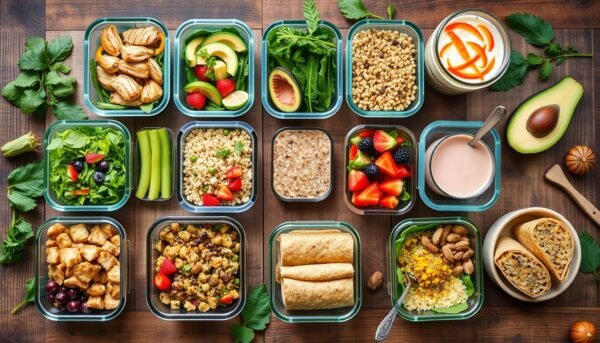When I hit my 40s, losing weight became a big challenge. Hormones, metabolism, and activity levels changed, making it tough. But I didn’t give up, and I found the best ways to lose weight in my 40s.
Understanding the challenges of losing weight after 40 is key. We need to tackle hormonal changes, slower metabolism, and common obstacles. This way, we can make a plan that works for us.
Adjusting what we eat, doing specific exercises, and managing emotional eating are all important. These tools can help us reach our weight loss goals.
I’m excited to share what I’ve learned. With the right mindset and determination, you can lose weight in your 40s too. Let’s explore the ultimate hacks that will change your body and life.
Understanding the Challenges of Losing Weight After 40

When we reach our 40s, losing weight gets tougher. Hormonal changes play a big role in this. Perimenopause, which starts between 36-45, lowers estrogen levels. This can slow down our metabolism and change how fat is stored.
Other issues in the 40s include less activity, more stress, and sleep problems. Not getting enough sleep, common during perimenopause, makes losing weight harder. Menopause, starting around 50, and andropause, starting in the late 40s, add to these challenges.
Metabolic Slowdown Factors
Our metabolism slows down as we age. This is partly because we lose muscle mass in our 40s. Loss of muscle mass slows down metabolism, making it harder to lose weight. Hormonal changes also affect how we use energy, making metabolism slower.
Common Weight Loss Obstacles
- Time constraints and busy schedules
- Family obligations and caregiving responsibilities
- Increased stress levels from work and life demands
- Emotional eating and difficulty managing cravings
- Sleep deprivation and disrupted sleep patterns
Dealing with these challenges needs a smart plan for weight management. Knowing the unique factors helps us tackle obstacles and reach our weight loss goals in our 40s.
Essential Nutrition Strategies for Midlife Weight Management

Understanding the right nutrition is key when losing weight in our 40s. Eating protein-rich foods helps repair and build muscle. This is important because muscle naturally declines with age. Aim for 20-30 grams of protein at meals and 10-15 grams in snacks.
Fiber-rich foods are also crucial. They make you feel full and help control blood sugar. Try to get about 30 grams of fiber a day from whole grains, fruits, veggies, and legumes. Healthy fats, like omega-3s, can also help by blocking hormones that lead to weight gain.
| Nutrient | Recommended Daily Intake |
|---|---|
| Protein | 20-30 grams per meal, 10-15 grams per snack |
| Fiber | 30 grams |
| Healthy Fats | 53-60 grams (for a 1,600-1,800 calorie diet) |
To support your healthy meal plans for midlife and losing weight after 40, aim for 1,500-1,600 calories a day. This balanced diet, along with mindful portion control, can help you reach your weight loss goals.
The secret to lasting healthy meal plans for midlife and losing weight after 40 is finding a plan that fits you. Focus on whole, nutrient-dense foods and control your portions. This way, you can meet your body’s changing needs and reach your weight loss goals.
Smart Meal Planning and Portion Control Techniques

Reaching our 40s makes losing weight harder. Hormones change, metabolism slows, and lifestyle shifts happen. But, smart meal planning and portion control can help. They can help us reach our weight loss goals for midlife.
Creating Balanced Plate Portions
To make sure your meal is balanced and nutritious, divide your plate into three parts:
- Half for vegetables
- One quarter for lean protein
- One quarter for complex carbohydrates
This simple method helps you get the right nutrients. It fuels your body and supports your weight loss efforts after 40.
Meal Timing Strategies
Eating big meals early in the day can help with weight loss. Our metabolism slows down later. Try different meal times to see what works for you.
Healthy Meal Prep Tips
Meal prep is a big help for staying healthy in midlife. Spend time each week planning and preparing meals and snacks. Choose cooking methods like grilling, baking, or broiling to avoid unhealthy fats. Having healthy food ready can stop you from eating bad food that can hurt your weight loss.
Remember, being consistent is crucial for losing weight after 40. Using these meal planning and portion control tips daily can help you reach your weight loss goals. It also helps you keep a healthy lifestyle.
The Power of Protein in Your Weight Loss Journey

When you’re trying to lose weight in your 40s, don’t forget about protein. It’s key for fixing and growing muscle. It also takes longer to digest, which helps keep you full and stops you from eating too much.
Experts say to eat 20-30 grams of protein at meals and 10-15 grams at snacks. You can get this from lean meats, fish, eggs, legumes, and plant-based proteins. For example, Greek yogurt has almost double the protein of regular yogurt but less sugar.
Eating more protein can really help with weight loss. It can cut down your daily calorie intake by 441 calories. It also makes your body burn more calories, up to 260 calories a day, as it works harder to digest protein.
To get the most from protein, eat a variety of protein-rich foods. Make sure you’re getting enough without overdoing it. Too much protein can cause dehydration or constipation.
| Protein-Rich Foods | Protein Content (per serving) |
|---|---|
| Lean Chicken Breast | 30g |
| Salmon Filet | 25g |
| Greek Yogurt | 20g |
| Lentils | 18g |
| Eggs | 6g |
Adding protein to your weight loss plan can help you feel full longer and reduce cravings. It also boosts your metabolism. Make protein a big part of your diet to reach your fitness goals in your 40s.
Metabolism-Boosting Exercise Routines for 40-Plus

When we hit 40, keeping fit is key to losing weight and keeping muscle. We need a mix that boosts our metabolism and meets our midlife needs.
Strength Training Fundamentals
Strength training is a big help for fitness routines over 40. Do at least two strength training sessions a week. This helps keep muscle mass from dropping with age.
Choose exercises that work many muscles at once. Squats, lunges, and push-ups are great. They help burn more calories.
Cardio Guidelines
Cardio is vital for maintaining muscle mass after 40. High-intensity interval training (HIIT) is good for quick calorie burn and heart health. But, low-impact activities like brisk walking, cycling, and swimming are easy on your joints.
- Do at least 3 cardio sessions a week, lasting 30-60 minutes each.
- Try HIIT workouts with 40 seconds of exercise and 20 seconds rest. Repeat for 4 rounds.
- Low-impact activities like brisk walking, cycling, or swimming are good for your joints.
Recovery Techniques
Rest and recovery are as important as working out. Add yoga or tai chi to your routine. They help with flexibility, balance, and muscle tone while lowering stress.
Balance strength training, cardio, and recovery for the best results. Stay consistent, listen to your body, and see your fitness and weight goals improve.
Understanding and Managing Emotional Eating

Losing weight after 40 is tough, especially with emotional eating. Hormonal changes and stress make us want to eat for comfort. But, knowing and dealing with emotional triggers can help a lot.
Research shows that thinking in extremes can lead to bad eating habits. This makes it hard to follow a healthy diet. Also, feeling bad about our bodies can make eating unhealthy worse.
Emotional eating at midlife can be a way to deal with stress. Depression, sleep issues, or tiredness can make losing weight harder. Feeling overweight can also make us feel worse, starting a bad cycle.
To stop this, we need new ways to handle stress and feelings. Deep breathing, meditation, or hobbies can help. Keeping a food diary is also useful. It shows us when and why we eat too much.
By tackling the emotional reasons for our eating, we can reach our weight loss goals after 40. We can also live a healthier, balanced life.
Sleep Optimization for Weight Management Success

Losing weight in our 40s is tough. But, quality sleep is key. It’s a must for middle-age weight loss success. Yet, as we age, getting 7-9 hours of sleep each night gets harder.
Sleep Hygiene Tips
Stick to a sleep schedule and have a calming bedtime routine. Stay away from screens and bright lights before bed. Make sure your room is cool, dark, and quiet. If you need help, try magnesium supplements, but talk to your doctor first.
Stress and Sleep Connection
Stress can stop you from sleeping well. This can mess up your weight loss after 40 plans. Try deep breathing, meditation, or yoga to relax before bed. This helps break the stress-sleep cycle.
Good sleep is more than feeling tired. It helps keep your metabolism healthy. Focus on your sleep habits for better weight loss.
Strategic Approach to Intermittent Fasting After 40
In my 40s, I’ve started to look into intermittent fasting for weight loss and health. Many studies show it can help people lose weight, especially if they’re overweight or obese.
The 16:8 method is a common choice. It means fasting for 16 hours and eating in an 8-hour window. This method fits well with my sleep schedule. It also improves insulin sensitivity and helps with detox, which is great for women over 40.
Starting intermittent fasting is exciting, but I need to do it carefully. I’ll start with short fasts and slowly increase them. I’ll make sure I eat enough during my eating times. I’ll also talk to my doctor first, as I have health conditions to consider. I’m optimistic that it will help me with intermittent fasting 40 plus and losing weight after 40.
This post may contain affiliate links which means I may receive a commission for purchases made through links. I will only recommend products that I have personally used! Learn more on my Private Policy page.